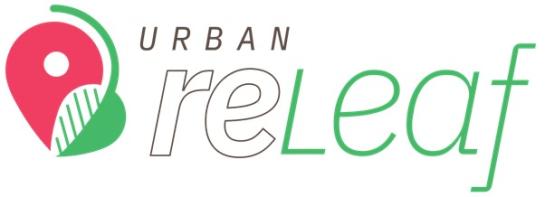
Title: Citizen-powered data ecosystems for inclusive and green urban transitions
Call: HORIZON-CL6-2022-GOVERNANCE-01-08
EU nr: 101086638
Period: 01/01/2023 – 31/12/2026 (48months)
Budget : Total: 8,999,808.13€ ; VUB: 419,062.5€
Contact: Bram Lievens and Dorottya Varga
Introduction
‘We live in an urban century where by 2050, an estimated 2.4 billion additional people will live in cities globally. At the European level, urbanization is expected to increase from 72% in 2015 to 83.7% by 2050, while built-up areas are likely to expand by more than 3% between 2015 and 2030, reaching 7% of the EU territory. Living in urban areas can have negative impacts on health and well-being. In the EU, some 85% of the urban population is exposed to fine particulate matter at harmful levels to health’ .
At ERIS, we have asked Bram: ‘What is Urban ReLeaf about?’ Bram: “Climate change will exacerbate the urban heat island effect, with forecasts of 150K deaths annually in Europe by 2100 due to more severe heat waves. From a climate change adaptation, health and well-being perspective, Nature-based Solutions (NBS), such as the expansion of urban greenspace and planting of trees, can provide cooling effects, decrease air pollution, and improve mental health, among other ecosystem services and health-related benefits”.
Thus, ‘why is Urban ReLeaf important and what is VUB’s role in the project?’Bram: “ The VUB will be involved in assessing current urban greening policy processes -within the six European consortium partner cities- and co-create solutions that use citizen observations to complement existing data ecosystems and decision-making. Thus, we will contribute to consolidating the EU environmental monitoring mechanisms such as Copernicus and the Global Earth Observations System of Systems (GEOSS). Furthermore, we will be leading inclusive citizen-science engagement and participation strategies with the objective of delivering strategy blueprints for each Urban ReLeaf City outlining pathways for inclusive citizen science. This is one of the first projects at the EU level, in which we have the opportunity to systematically target vulnerable and marginal social groups through citizen science."
Aim (What)
Urban ReLeaf is an action-oriented mission to advance citizen-powered science as a central resource for inclusive urban green planning in support of local policy making, European strategies and monitoring systems (e.g., the Green Deal, Copernicus), and global efforts such as the SDGs and GEOSS.
Methodology (How)
The project has 6 objectives and will:
(i) assess current urban greening policy processes within six European cities and co-create solutions that use citizen observations to complement existing data ecosystems and decision-making;
(ii) support the validation and long-term inclusion of active and passive data from citizens for urban environmental monitoring within authoritative data streams, including GEOSS & Copernicus;
(iii) mobilize and empower communities through widespread participation in issues of public interest surrounding urban green infrastructure;
(iv) develop a community of practice around topics related to the use of citizen observations for urban planning to foster knowledge exchange and develop capacities across multiple sectors;
(v) produce flexible and innovative governance solutions to help scale-out inclusive urban green transitions in support of the European Green Deal and UN Sustainable Development Goals;
(iv) promote recognition, adoption and trust of citizen observations and other novel data ecosystems for environmental monitoring to trigger innovation within public institutions.
Impact (Why)
The project is coordinated by IIASA, who led the WeObserve project, and involves partners from previous successful H2020 citizen observatory projects, as well as six cities (Athens, Cascais, Dundee, Mannheim, Riga, Utrecht) that are willing to embrace new data streams for urban greening planning and policy making and to fully engage with citizens including marginalized and vulnerable groups. Urban ReLeaf is also supported by technology partners and those with strong links to Copernicus and GEO.
